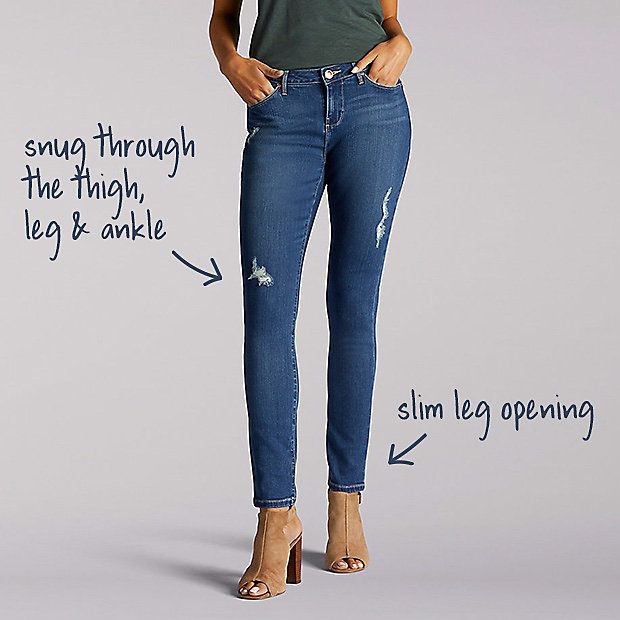I have envied all the Pinterest and Instagram pics of gals rockin’ hardcore distressed jeans for some time now that I wish I could have my own pair. I love projects so I thought I was going to make my own pair of troubled DIY jeans! I knew that if I put some sweat in it, I could get there and I felt quite happy with the final result. I recently picked up a pair of vintage Edwin light washed jeans in Portland and knew they were the right wash and fit to try my trouble. It took me a little to get the hang of, but if you follow the steps below you will be able to duplicate the distressed look on your own vintage or older worn-out jeans for much less than you would pay for a distressed pair.
Mark the Cuts

By bending your knees slightly and marking them with a washable pencil or chalk line, you’ll want to get the right knee spots approximately determined.
Measure your Cut Lines

This can become as imaginative as you like, or as simple. I began around the initial cut line with a rough 3-4 inch diameter, but it developed slowly as I continued to go. The key point is to make sure that it usually starts from the top to bottom and from there you can get creative.
Cut your Strips

I started cutting strips of the same length (approximately 1/2-1 inch wide) and you need to do your best to cut the grain. If you look inside the pants you will see how the white threads are running and you want to cut not only straight across the pant’s horizontal line but also follow the grain so that the string pieces you are pulling out are not cut in half. (You’re going to know what I mean once you try one or two)! Make sure you inside the jeans put cardboard, a magazine or a bunch of paper to be used as a cutting board to cut your strips.
Pull Out the Horizontal Threads

Once you’ve cut the strips, you’ll want to start by taking one strip and pulling the nearest white thread from the top until there are about 5 ish threads from both the top and the bottom of the strip. The point of this step is to make pulling out the vertical jean threads easier for you, and I found the whiter horizontal threads you get out of the strip the easier it is to do so. One thing I noticed in a distressed section (as noted in the last step) is that if you just go with your eye and cut a straight line strip, you could end up cutting the white threads in half, which ends up without horizontal threads across the hole.
Pull the Vertical Threads Out

After pulling the horizontal threads, aim to start pulling the vertical threads from the center of the string. Once you get the first few down, taking them out will be a lot simpler. Work your way up the strip on one side and then head to the other side. Don’t worry if it looks to square off at the corners as you go from strip to strip, in the next step I found a great way to make it look a little more natural.
Clean Up the Edges

Once all the vertical threads are removed and the hole is well distressed, go around the edge of the hole and start pulling out the blue threads to loosen up each strip’s square corners. Do this as much or as little as you like until it appears as natural as possible. You can also cut off white threads in this stage if you prefer, which hang loose.
Go Wild with Distress

Once you’ve finished a section / distressed hole (and it’ll take time, I think it took me like 10 hours to complete the entire process of the DIY distressed jeans), make more slits and cut the top, middle and bottom of the pants as much or as little as you’d like.





















